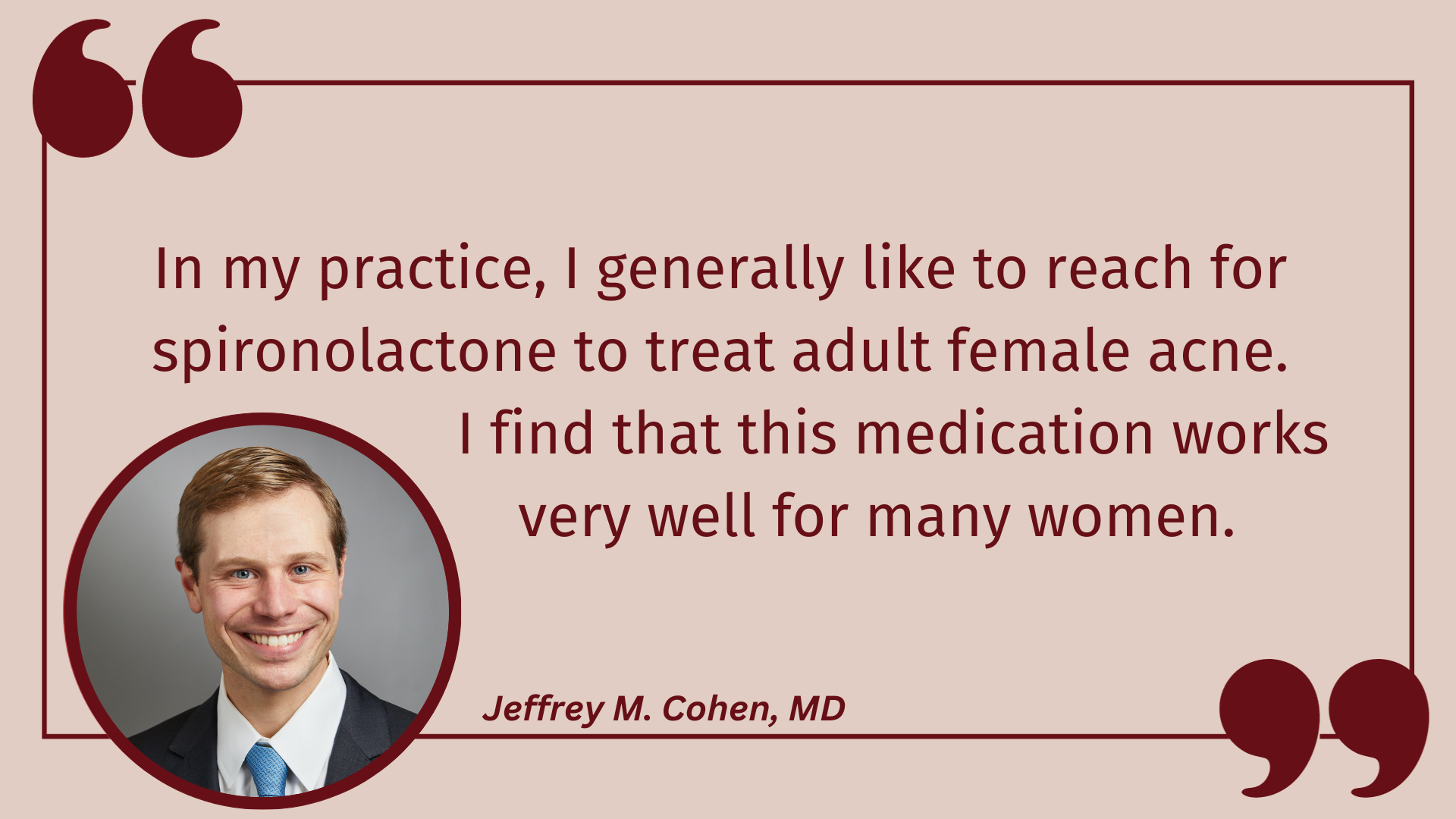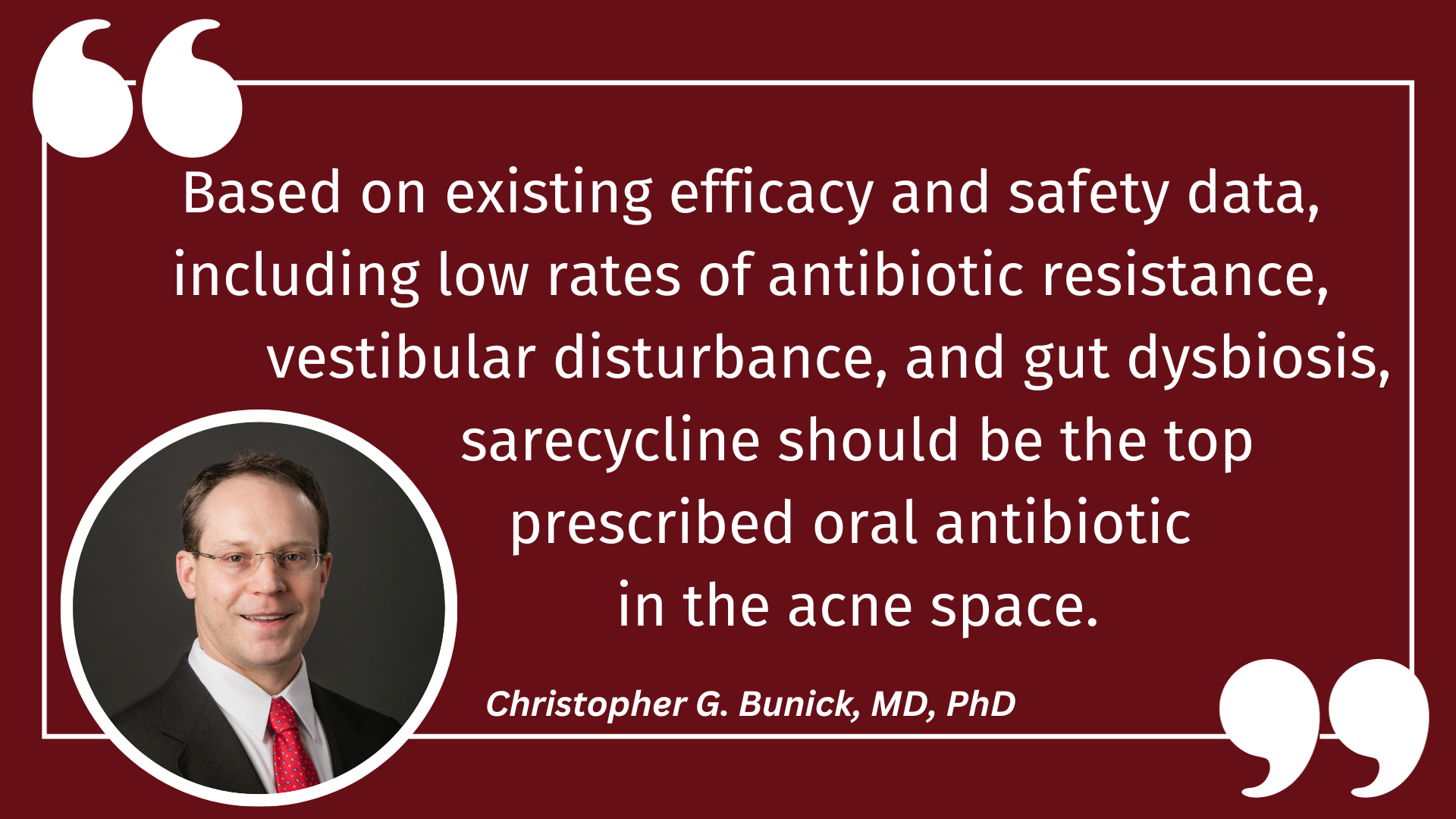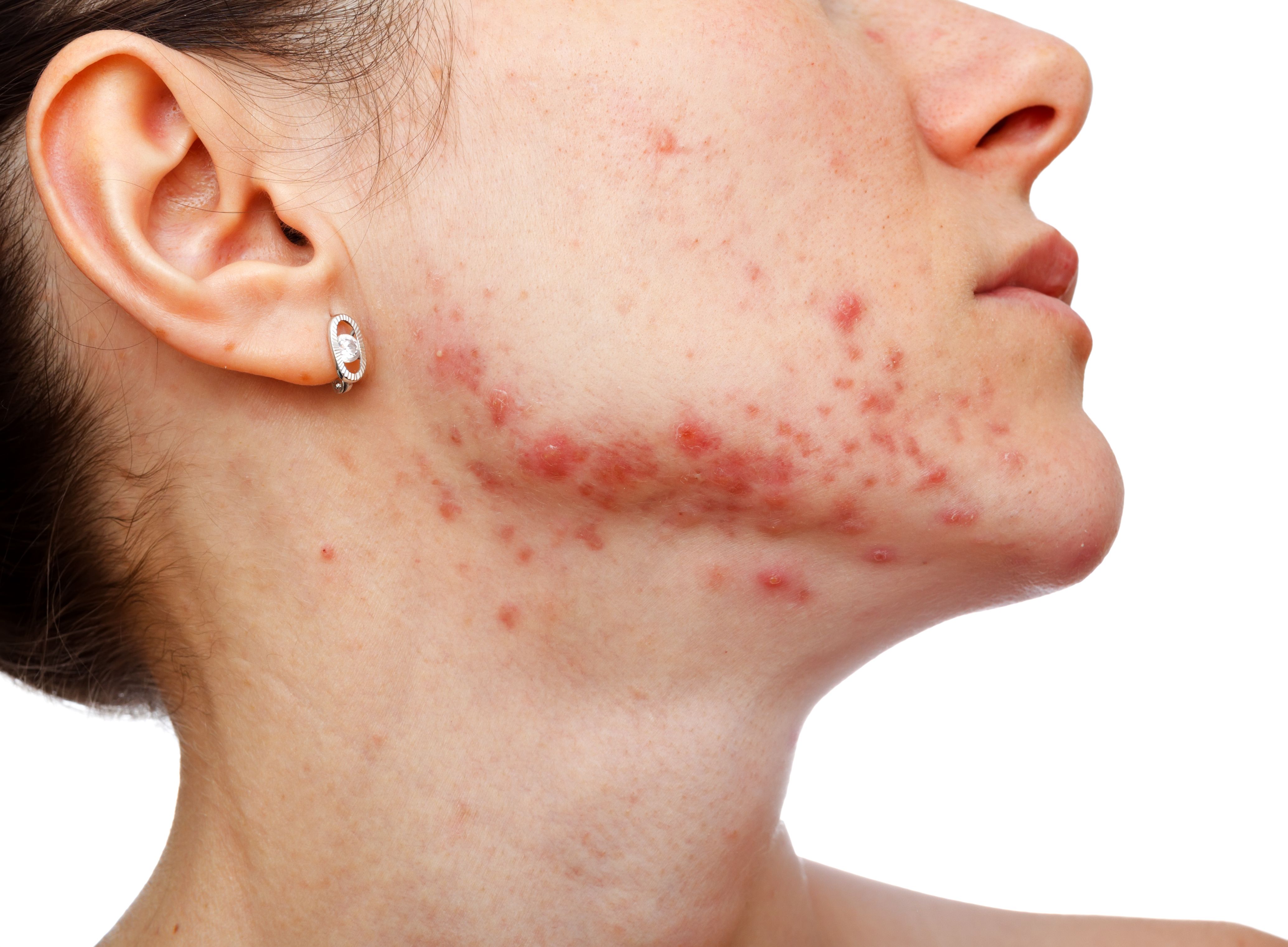- Case-Based Roundtable
- General Dermatology
- Eczema
- Chronic Hand Eczema
- Alopecia
- Aesthetics
- Vitiligo
- COVID-19
- Actinic Keratosis
- Precision Medicine and Biologics
- Rare Disease
- Wound Care
- Rosacea
- Psoriasis
- Psoriatic Arthritis
- Atopic Dermatitis
- Melasma
- NP and PA
- Skin Cancer
- Hidradenitis Suppurativa
- Drug Watch
- Pigmentary Disorders
- Acne
- Pediatric Dermatology
- Practice Management
- Prurigo Nodularis
- Buy-and-Bill
News
Article
Dermatology Times
Research Finds Dermatology Visits for Acne Higher in Adult Female Patients
Author(s):
Yale School of Medicine researchers found tetracycline-class antibiotics were the most prescribed acne treatment for adult female patients between 2002 and 2016.
Recent research published in PLOS ONE1 found that a significant proportion of dermatology visits for acne were higher in adult female patients 20 years and older (10.1%) compared to adult male patients (4.1%), an almost 2.5-fold increase. Yale School of Medicine researchers Jungsoo Chang, BSE; Michael R. Nock, BA; Jeffrey M. Cohen, MD; and Christopher G. Bunick, MD, PhD, also found that tetracycline-class antibiotics were the most prescribed acne treatment by all providers for all age groups of female patients (22.9% of visits).
“The frustrations and struggles adult women experience with acne are exactly why this study was conducted. I noticed for several years that the majority of the acne patients I was seeing were adult females; moreover, most of the women expressed confusion as to why they could possibly have acne in their 30s and 40s, saying they ‘were no longer teenagers.’ Therefore, we wanted to examine and dispel the myth that adult women can't get acne, with the goal to eliminate the stigma that there is something ‘wrong with you’ if you are older and have acne,” Bunick, a board-certified dermatologist, associate professor of dermatology, and physician-scientist at the Yale School of Medicine, told Dermatology Times. “In fact, we prove that adult female acne is a major problem and that many women are experiencing it. In my practice, I have found patients want to know they are not alone experiencing the problem, and that they are not doing something wrong to cause it. From there, reassuring the patients that their acne can be treated with multiple therapeutic options is an honest and optimistic message.”
The authors acknowledged that previous studies have analyzed the self-reported prevalence of acne by specific age groups, but that their study is the first to look at health care utilization and treatment for acne stratified by age and sex. Additionally, the authors noted that more research may be needed to understand the broader trends and treatments specific to adult female acne, as adult acne may have a different pathogenesis than juvenile acne.
"The pathogenesis of acne is not fully elucidated, though it involves sebocytes/sebum, follicular hyperkeratosis, bacteria, and inflammation. Age is of importance given the fluctuations and changes in hormonal balance in females from the third and fourth decades of life followed by significant estrogen drop-off with menopause,” the authors wrote.
Methods
Chang et al used 2002 to 2016 National Ambulatory Medical Care Survey (NAMCS) data to study patterns in office visits and acne treatments for female patients aged 13 years and older in the US categorized by age. The defined age categories started with adolescence, including ages 13 to 19, and were followed by stratification by decades. Sex, race, ethnicity, insurance types, and region were based on NAMCS reporting.
The authors analyzed the prescription of topical and systemic agents for female patients pursuing acne treatment by all provider types, which included physicians and advanced practice providers in all specialties, as well as non-dermatology specialties of primary care, family medicine, obstetrics and gynecology, and more. Prescriptions were characterized by identifying medications based on the American Academy of Dermatology’s (AAD) acne treatment guidelines. The identified medication groups included systemic tetracycline-class antibiotics (eg, doxycycline and minocycline), spironolactone, combination oral contraceptive pills, topical tretinoin (tretinoin, adapalene, and tazarotene) only, topical antibiotic (eg, clindamycin or erythromycin) only, or combination topical tretinoin and antibiotic.
Results
Dermatology Visits
Chang et al collected a weighted total of 282,877,917 dermatology visits for female patients aged 13 years and older from 2002 to 2016. The authors wrote that although 62.4% to 69.7% of dermatology visits were for acne regardless of sex during teenage years, there was a significantly higher proportion of dermatology visits for acne among female patients compared to male patients after age 20 (10.1% vs 4.1%). “Among all dermatology office visits, a diagnosis of acne was made at 44.4% of visits for females ages 20-29, 22.9% for females ages 30-39, 12.4% for females ages 40-49, and decreased substantially at visits for females beyond age 50 (1.8%),” the authors wrote.
Demographics and Specialties
Regarding the specialists treating acne, most female patients aged 13 years and older diagnosed with acne were seen in a dermatology practice (70.6% of all visits). Patients who wanted dermatology care were mostly white (85.2%), non-Hispanic (89.2%), and had private insurance (50.9%). When compared to other specialties, there was a larger proportion of patients with private insurance seeking a dermatology specialist compared to other types of insurance. The overall proportion of adolescent patients with acne treated by specialties other than dermatology (51.2%) was greater than patients treated by a dermatologist (34.6%).
Prescription Trends

Tetracycline-class antibiotics were the most prescribed acne treatment by all providers for all age groups of female patients, but the authors also noted that there was an increase in prescriptions of spironolactone from 2012 to 2016. Spironolactone became the second most prescribed acne therapy for female patients ages 20 to 29 and the most prescribed therapy for female patients ages 30 to 39 and older than 50 years between 2012 and 2016.
“In my practice, I generally like to reach for spironolactone to treat adult female acne. I find that this medication works very well for many women. Spironolactone also tends to be well tolerated and is safe for long-term use,” Cohen, a board-certified dermatologist, assistant professor of dermatology, and the director of the Psoriasis Treatment Program at the Yale School of Medicine, told Dermatology Times.
Female patients ages 20 to 29 were prescribed combination birth control at higher rates (8.8%) than any of the other age groups. Lastly, compared to ages 30 to 39, female patients ages 40 to 49 “received spironolactone (9.0% vs. 4.7%) and topical antibiotics (12.1% vs. 6.8%) at lower rates and received oral antibiotics at a higher rate (22.6% vs. 26.0%).”
Review
From their data, Chang et al determined that there is a significant number of dermatology visits by adult female patients with acne aged 20 years and older, as well as a statistically significant difference between the proportion of dermatology acne visits in adult female patients compared to adult male patients.
“I find that I see many more adult women than men for acne in my own practice. Particularly, I find that I see a lot of women in their 20s and 30s for acne. Many of these women express frustration and feel that they are the only ones still struggling with acne, which is seen by many people as a problem that only teenagers have. It is really helpful to have data to share with adult women with acne that offers reassurance that they are not alone and that there are many other people going through the same thing,” said Cohen.
The authors considered the complicated pathogenesis of acne and noted that genetics, exacerbation around menstrual cycles, and stress can be associated with adult acne. Although some leading studies point towards increased androgen production altering and increasing sebum production, hormonal screenings of women with adult acne show normal levels of DHEA, testosterone, and androgen, suggesting a potential intracrine effect of androgen, according to Chang et al. The authors also mentioned that the pathogenesis of acne in some female patients “may be related to the use of progesterone-only oral contraceptives, which have been reported to exacerbate acne,” and that overall, additional studies are needed to improve acne treatments for adult female patients.

Lastly, although tetracycline-class antibiotics were the most prescribed therapy for adult female acne, tetracycline antibiotics are associated with high failure rates, with previous failure rates of up to 81%, according to the authors. Additionally, the frequent use of broad-spectrum tetracycline antibiotics may cause antibiotic resistance and treatment failure. Instead, the use of narrow-spectrum antibiotics such as sarecycline can reduce gut microbiome dysbiosis and antibiotic resistance, and overall improve antibiotic stewardship, the authors wrote.
“The data for this particular analysis pre-dated the FDA approval of sarecycline. While therapies like spironolactone are gaining momentum in treating female acne, antibiotics are still commonly prescribed. Based on existing efficacy and safety data, including low rates of antibiotic resistance, vestibular disturbance, and gut dysbiosis, sarecycline should be the top prescribed oral antibiotic in the acne space,” said Bunick. “However, cost issues, which include poor insurance coverage, remain a major barrier to dermatologists prescribing sarecycline over doxycycline and minocycline. Unfortunately, this hurts antibiotic stewardship when a narrow-spectrum antibiotic cannot be used over a broad-spectrum one (despite CDC recommendations).”
According to the authors, limitations of their study include the AAD’s acne treatment guidelines not releasing until 2016 at the end of their data set, the differences in the use of antibiotic acne medications and antihormonal medications based on specialty/provider type, analyzed systemic agents may have also been prescribed for polycystic ovary syndrome, dysmenorrhea, or contraception regarding combination birth control pills, and the authors could not accurately consider isotretinoin due to its inconsistent representation in the data.
Reference
- Chang J, Nock M, Cohen J, Bunick C. Acne accounts for an almost 2.5-fold higher proportion of dermatology visits among adult females compared to adult males in the United States: a study of the National Ambulatory Medical Care Survey from 2002-2016. PLOS ONE. 2023;18(9):e0290763. doi:10.1371/journal.pone.0290763







